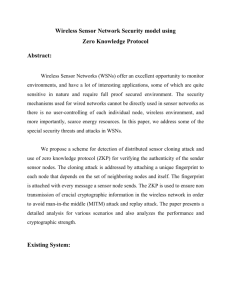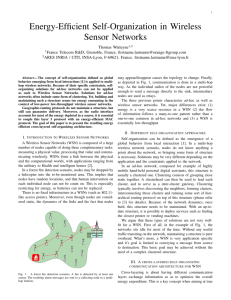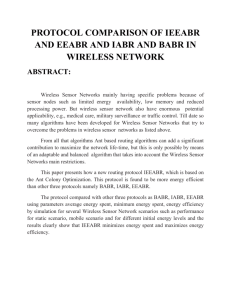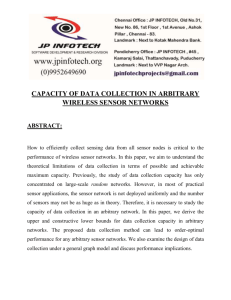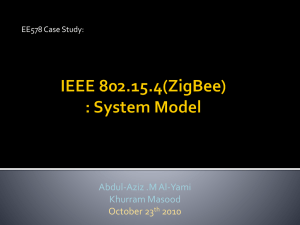- Krest Technology
advertisement
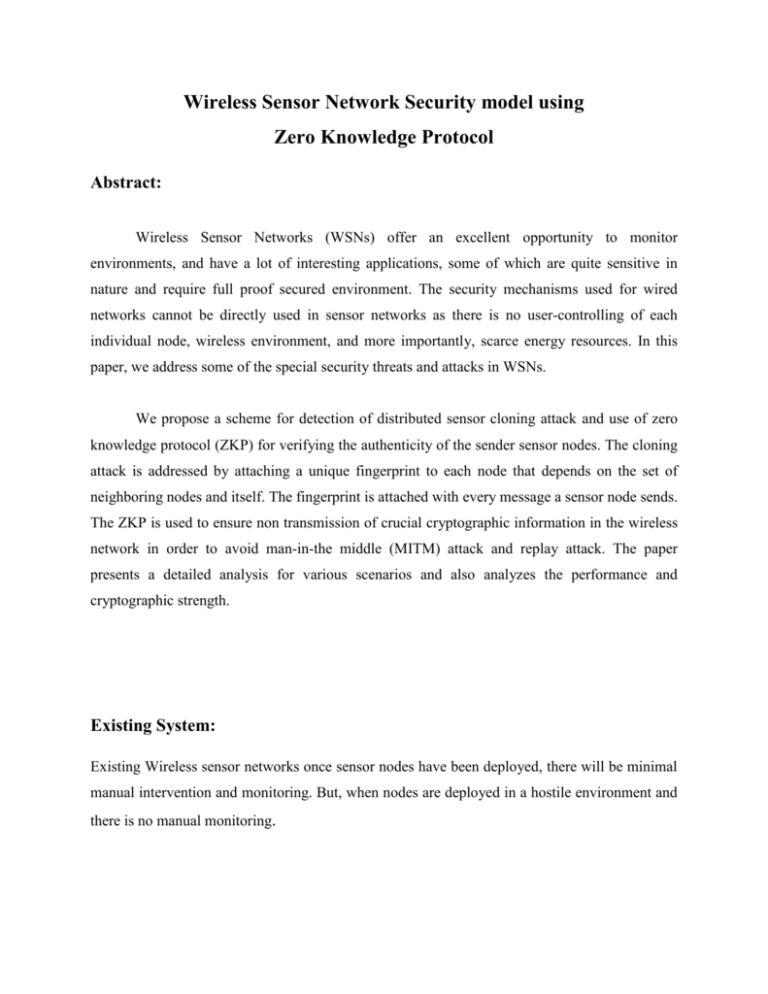
Wireless Sensor Network Security model using Zero Knowledge Protocol Abstract: Wireless Sensor Networks (WSNs) offer an excellent opportunity to monitor environments, and have a lot of interesting applications, some of which are quite sensitive in nature and require full proof secured environment. The security mechanisms used for wired networks cannot be directly used in sensor networks as there is no user-controlling of each individual node, wireless environment, and more importantly, scarce energy resources. In this paper, we address some of the special security threats and attacks in WSNs. We propose a scheme for detection of distributed sensor cloning attack and use of zero knowledge protocol (ZKP) for verifying the authenticity of the sender sensor nodes. The cloning attack is addressed by attaching a unique fingerprint to each node that depends on the set of neighboring nodes and itself. The fingerprint is attached with every message a sensor node sends. The ZKP is used to ensure non transmission of crucial cryptographic information in the wireless network in order to avoid man-in-the middle (MITM) attack and replay attack. The paper presents a detailed analysis for various scenarios and also analyzes the performance and cryptographic strength. Existing System: Existing Wireless sensor networks once sensor nodes have been deployed, there will be minimal manual intervention and monitoring. But, when nodes are deployed in a hostile environment and there is no manual monitoring. Proposed System: Nodes are divided into three categories; base station, cluster head and member nodes. Some arbitrary nodes are selected as cluster heads and generation of cluster heads is left to the clustering mechanism (not dealt in this work). Each cluster head knows about its member nodes, while every member node knows its cluster head. Base station stores information of all sensor nodes (including cluster heads). The base station maintains complete topological information about cluster heads and their respective members. Base station is powerful enough and cannot be compromised like other nodes of the network. There is no communication among the member nodes. Fig: ZKP (Zero knowledge protocol) in the proposed model Public key cryptography is based on RSA approach. The energy consumption and computational latency makes RSA inappropriate for sensor network applications. Security algorithms that are designed specifically for sensor networks are found to be more suitable. The goal of this paper is to develop a security model for wireless sensor networks. We propose a method for identifying the compromised/cloned nodes and also verifying the authenticity of sender sensor nodes in wireless sensor network with the help of zero knowledge protocol.

